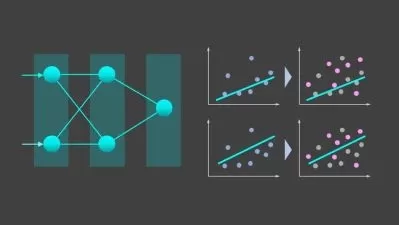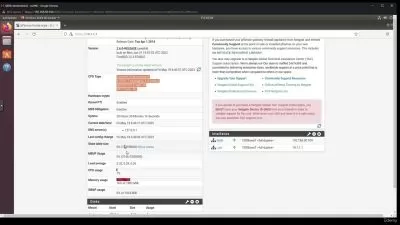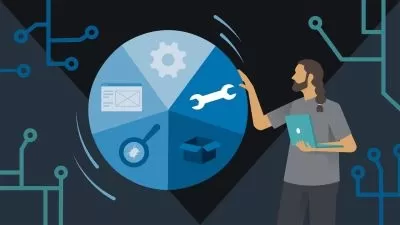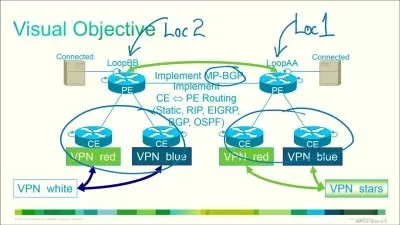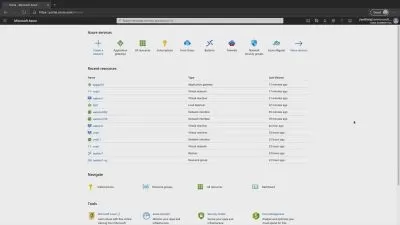Splunk for Security Analysts
Focused View
15:21:40
1,271 View
Course Introduction.pdf
[SPLUNK] 0.1 - Course Welcome.mp4
07:43
[SPLUNK] 0.2 - The Power of Splunk.mp4
20:20
Files.zip
[SPLUNK] 1.1 - Lab Configuration Overview.mp4
03:06
[SPLUNK] 1.2 - Installing Splunk on Linux.mp4
10:34
[SPLUNK] 1.3 - Installing the Splunk Universal Forwarder on Windows.mp4
05:49
[SPLUNK] 1.4 - Installing the Splunk Universal Forwarder on Linux.mp4
05:22
Files.zip
[SPLUNK] 2.1 - Components of a Splunk Environment.mp4
16:56
[SPLUNK] 2.2 - How Data Travels Through Splunk.mp4
10:40
[SPLUNK] 2.3 - Introduction to Indexes.mp4
04:31
[SPLUNK] 2.4 - A First Overview of the Splunk GUI.mp4
12:37
[SPLUNK] 2.5 - Enable a Receiver for Splunk Enterprise.mp4
02:27
[SPLUNK] 2.6 - Understanding Configuration Files.mp4
18:41
[SPLUNK] 2.7 - Understanding Apps.mp4
15:44
[SPLUNK] 2.8 - Shipping Windows Event Logs to Splunk.mp4
15:43
Files.zip
[SPLUNK] 3.1 - Troubleshooting - Changes Not Taking Effect.mp4
14:33
[SPLUNK] 3.2 - Troubleshooting - Inputs are Not Showing Up in Index.mp4
22:53
[SPLUNK] 3.3 - Applying Changes without Restarting Splunk.mp4
02:29
Files.zip
[SPLUNK] 4.1 - Creating a Text Index - Solution.mp4
07:46
[SPLUNK] 4.2 - Onboarding Exported Windows Event Logs.mp4
09:59
[SPLUNK] 4.3 - Onboarding Windows Registry Data.mp4
09:47
[SPLUNK] 4.4 -Onboarding Linux Logs.mp4
19:42
[SPLUNK] 4.5 - Onboarding Apache Web Server Logs.mp4
19:05
[SPLUNK] 4.6 - Onboarding CSV Files.mp4
20:04
[SPLUNK] 4.7 - Onboarding Custom Data Sources.mp4
21:30
[SPLUNK] 4.7 - Onboarding Custom Data Sources 2.mp4
21:30
[SPLUNK] 4.8 - Extracting Fields Using EXTRACT.mp4
20:38
[SPLUNK] 4.9 - Extracting Fields Using REPORT.mp4
06:04
Files.zip
[SPLUNK] 5.1 - Onboarding the BOTSv2 Data Set into Your Lab.mp4
13:11
[SPLUNK] 5.2 - Search Components.mp4
14:17
[SPLUNK] 5.3 - Search Modes.mp4
10:24
[SPLUNK] 5.4 - Search.mp4
25:03
[SPLUNK] 5.5 - Time.mp4
07:49
[SPLUNK] 5.6 - Fields, Table, and Sort.mp4
09:49
[SPLUNK] 5.7 - Top and Rare.mp4
06:03
[SPLUNK] 5.8 - Eval.mp4
04:26
[SPLUNK] 5.9 - Where.mp4
04:43
[SPLUNK] 5.10 - Rex.mp4
07:44
[SPLUNK] 5.11 - The Power of the Stats Command.mp4
23:26
[SPLUNK] 5.12 - Eventstats 2.mp4
07:43
[SPLUNK] 5.13 - Streamstats.mp4
13:42
[SPLUNK] 5.14 - Chart and Timechart.mp4
24:44
[SPLUNK] 5.15 - Joining Datasets Efficiently.mp4
16:35
[SPLUNK] 5.16 - More Searching Tips.mp4
09:44
[SPLUNK] 5.17 - Building Reusable Search Elements Using Macros.mp4
16:00
Files.zip
[SPLUNK] 6.1 - Enriching Data with Lookups.mp4
22:06
[SPLUNK] 6.2 - File-Based Lookups.mp4
10:07
[SPLUNK] 6.3 - Using the Splunk App for Lookup File Editing.mp4
01:46
[SPLUNK] 6.4 - Key Value Store-Based Lookups.mp4
11:35
[SPLUNK] 6.5 - External Lookups.mp4
10:28
[SPLUNK] 6.6 - Automatic Lookups.mp4
08:37
[SPLUNK] 6.7 - Advanced Lookup Options.mp4
12:00
[SPLUNK] 6.8 - Subsearches.mp4
15:32
Files.zip
[SPLUNK] 7.1 - Sharing the Results of a Search.mp4
11:56
[SPLUNK] 7.2 - Creating and Sharing Reports.mp4
11:26
[SPLUNK] 7.3 - Scheduling Reports.mp4
19:58
[SPLUNK] 7.4 - Accelerate Reports.mp4
13:12
[SPLUNK] 7.5 - Creating Alerts.mp4
11:11
[SPLUNK] 7.6 - Configuration Using savedsearchesconf.mp4
08:02
Files.zip
[SPLUNK] 8.1 - Exploring Visualizations.mp4
10:34
[SPLUNK] 8.2 - Building a Static Dashboard.mp4
13:04
[SPLUNK] 8.3 - Adding a Shared Time Range Picker.mp4
08:23
[SPLUNK] 8.4 - Building a Dynamic Form Using Tokens.mp4
10:27
[SPLUNK] 8.5 - Using a Basesearch to Improve Loading Times - Part 1.mp4
15:58
[SPLUNK] 8.6 - Using a Basesearch to Improve Loading Times - Part 2.mp4
10:21
[SPLUNK] 8.7 - Configuring Drilldowns.mp4
11:18
[SPLUNK] 8.8 - Using Conditions in Drilldowns.mp4
10:54
[SPLUNK] 8.9 - Customizing Navigation.mp4
07:38
[SPLUNK] 8.10 - Exploring Dashboard Studio.mp4
05:46
Files.zip
[SPLUNK] 9.1 - Understanding Data Models.mp4
17:10
[SPLUNK] 9.2 - Searching with Data Models.mp4
11:19
Files.zip
[SPLUNK] 10.1 - Finding HTTP Connections to Servers by IP.mp4
06:01
[SPLUNK] 10.2 - Searching Two Data Sources for a Common Indicator.mp4
13:00
[SPLUNK] 10.3 - Finding Traces of Look-A-Like Domains.mp4
08:03
[SPLUNK] 10.4 - Using Geolocation to Find Anomalous Connections.mp4
04:55
[SPLUNK] 10.5 - First Time Logins for Users on a Machine.mp4
05:57
[SPLUNK] 10.6 - Identifying Password Guessing Attempts with Failed and Successful Logins.mp4
08:30
[SPLUNK] 10.7 - Identifying High Network Bandwidth Consumption from a Baseline.mp4
08:47
[SPLUNK] 99.1 - Going Furtther.mp4
02:55
[SPLUNK] 99.2 - Course Wrap-Up.mp4
01:08
More details
User Reviews
Rating
average 0
Focused display
Category

Udemy
View courses UdemyStudents take courses primarily to improve job-related skills.Some courses generate credit toward technical certification. Udemy has made a special effort to attract corporate trainers seeking to create coursework for employees of their company.
- language english
- Training sessions 79
- duration 15:21:40
- Release Date 2024/07/07





